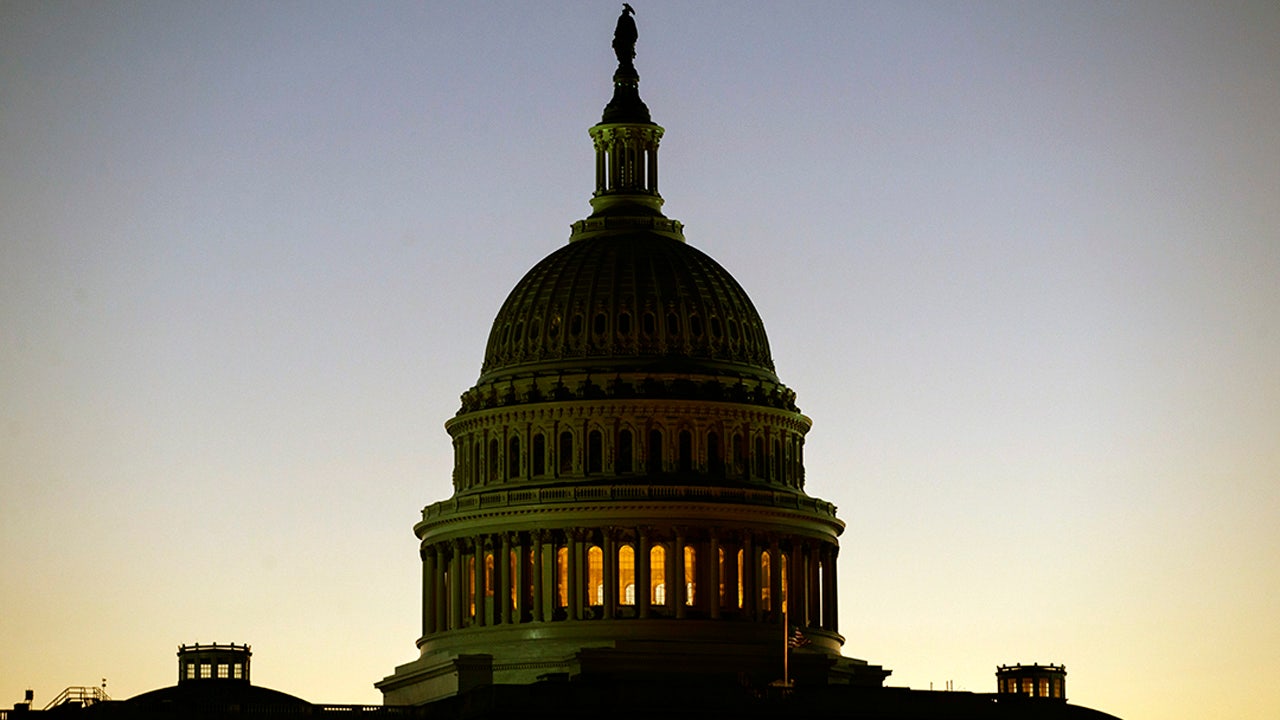Austin, TX
Some state abortion bans stir confusion, and it's uncertain if lawmakers will clarify them

Ever since the nation’s highest court ended abortion rights more than a year ago, vaguely worded bans enacted in some Republican-controlled states have caused bewilderment over how exceptions should be applied.
Supporters have touted these exemptions, tucked inside statutes restricting abortion, as sufficient enough to protect the life of the woman. Yet repeatedly, when applied in heart-wrenching situations, the results are much murkier.
“We have black and white laws on something that is almost always multiple shades of gray,” said Kaitlyn Kash, one of 20 Texas women denied abortion who are suing the state seeking clarification of the laws — one of a handful of similar lawsuits playing out across the country.
Advertisement
Article continues below this ad
State lawmakers there and elsewhere face growing pressure to answer these questions by amending laws in legislative sessions that start in most states next month. But it’s not certain how — or whether — they will.
Before the Supreme Court overturned the 1973 Roe v. Wade decision in June 2022, nearly every state allowed abortion at least until a fetus would be viable outside the womb — around 24 weeks’ gestational age, or about 22 weeks after conception.
Yet the new ruling cleared the way for states to impose tighter restrictions or bans; several had such laws already on the books in anticipation of the decision.
Currently, 14 states are enforcing bans on abortion throughout pregnancy. Two more have such bans on hold due to court rulings. And another two have bans that take effect when cardiac activity can be detected, about six weeks into pregnancy — often before women know they’re pregnant.
Each state ban has a provision that allows abortion under at least some circumstances to save the life of the mother. At least 11 — including three with the strictest bans — allow abortion because of fatal fetal anomalies, and some do when the pregnancy was the result of rape or incest.
Advertisement
Article continues below this ad
But a provision included in a law enacted by Congress in 1986 and signed by Republican President Ronald Reagan said abortion must be available when a pregnant woman’s life is at risk during a medical emergency.
But a lack of clarity over how to apply that rule and other exceptions in state laws has escalated the trauma and heartache some women experience while facing serious medical issues but unable to access abortion in their home states.
The case of Katie Cox, a Texas woman who sued for immediate access to abortion amid a fraught pregnancy and was denied by the state’s top court, received broad attention this month.
Meanwhile, Jaci Statton filed a complaint in Oklahoma claiming the state violated the federal rule. She said in court documents that because her own life wasn’t found to be in immediate peril when doctors deemed her pregnancy nonviable, she was told to wait in a hospital parking lot until her conditioned worsened enough to qualify for life-saving care.
In Tennessee, Nicole Blackmon told reporters that a 15-week ultrasound showed that several of her baby’s major organs were growing outside its stomach and it would likely not survive. Even so, her medical team told her she didn’t have the option to have an abortion. She eventually delivered a stillborn baby because she could not afford to travel out of state for an abortion.
Advertisement
Article continues below this ad
The vagueness surrounding the Volunteer State’s abortion ban has prompted Republican state Sen. Richard Briggs’ push to tweak the law during the upcoming 2024 legislative session. However, it’s unclear how far the measure will advance inside the GOP-controlled statehouse where many members are running for reelection.
Republicans carved out an extremely narrow exception earlier this year, but Briggs, who is a doctor, said the statute still fails to properly help women and doctors. He wants the law to include a list diagnoses when abortion could be appropriate and protect women with pregnancy complications who may end up infertile if they don’t receive an abortion.
Other states took steps in 2023 to address the confusion, but advocates say they didn’t fully accomplish the task.
In Texas, lawmakers this year added a provision that offers doctors some legal protection when they end pregnancies in cases of premature rupture of membranes, commonly referred to as water breaking, or ectopic pregnancies. which can lead to dangerous internal bleeding.
Across the country, advocates on both sides anticipate more legislatures will consider adding or clarifying abortion ban exceptions and definitions in 2024, though few, if any, such measures have been filed so far.
Advertisement
Article continues below this ad
“What is and is not an abortion, what is an abortion emergency?” said Denise Burke, senior counsel with Alliance Defending Freedom, a conservative Christian legal advocacy group that his behind many anti-abortion lawsuits. “That may need some clarification in some areas.”
Meanwhile, in state where Democrats are in control, lawmakers are expected to push to loosen abortion restrictions and expand access.
This year, Maine became the seventh state to have no specific limit on when during pregnancy an abortion can be obtained.
Greer Donley, an associate professor at the University of Pittsburgh School of Law, who is an expert on abortion law, said there could be a push for more changes like that: “Many people are questioning whether a line should exist at all right now.”
The line is stark in Texas, where changes are unlikely in 2024 because lawmakers aren’t scheduled to meet.
Advertisement
Article continues below this ad
In Texas, Kash and 19 other women who were denied abortions, plus two physicians, have a lawsuit before the state’s Supreme Court seeking to clarify when abortions should be allowed.
Kash, who already had one child, was overjoyed at the thought of telling family and friends that she was expecting. But after a routine ultrasound 13 weeks into pregnancy, she learned that the baby had severe skeletal dysplasia – a condition affecting bone and cartilage growth. Her baby was unlikely to survive birth or likely to suffocate soon after being born.
“Is this where we talk about termination?” Kash asked her doctor.
“He told me to get a second opinion out of state,” she recalled.
Her health wasn’t immediately at risk of failing, so she didn’t qualify for any of the narrow exceptions to allow her doctor to provide her abortion services. Instead, she went to another state to terminate her pregnancy legally.
In the arguments on the case last month, a lawyer for the patients told the justices about the confusion.
“While there is technically a medical exception to the ban,” Molly Duane, a Center for Reproductive Rights lawyer said, “no one knows what it means and the state won’t tell us.”
Beth Klusmann, an assistant state attorney general, said that the law does include guidance: Doctors must use “reasonable medical judgment” when deciding whether a pregnant woman’s life is at risk.
She added that “there are always going to be harder calls at the edge” of the lines of any abortion ban.
Marc Hearron, a lawyer at the Center for Reproductive Rights who is leading the Texas case, said he does not have a lot of confidence in lawmakers across the U.S. to do it right generally.
“Legislatures do not have a track record of listening to doctors,” he said. “We’re certainly not waiting on legislatures to do the right thing.”

Austin, TX
Texas Longhorns’ SEC Opponents Revealed for 2026 and Beyond

The debate over whether or not the SEC should move to nine conference games has been raging on for a while now, but that debate has finally been put to bed.
Last month, SEC presidents moved to adopt a nine-game conference schedule starting in 2026. As part of the schedule, each team will have three annual opponents with the other six games rotating. This will allow every team to play each other at least once every other year.
The SEC previously announced that the Texas Longhorns’ annual opponents would be Arkansas, Oklahoma and Texas A&M, at least until the league reevaluates annual opponents ahead of the 2030 season. Now, they know exactly who they’ll be facing in conference play for the next four years.
Here’s a look at the Aggies’ full list of conference opponents from 2026-29, as revealed by the league on Tuesday night.
Home
Away
Home
Away
Home
Away
Home
Away
As part of the nine-game schedule, the Longhorns will finally get to play the other half of the SEC. The conference previously had each of its 14 existing members play either Texas or Oklahoma, but not both, when those two teams joined in 2024, and then just repeated the same matchups in 2025.
This will allow the Longhorns to play some teams they haven’t faced in decades, most notably South Carolina (last played in 1957), Tennessee (1968) and Auburn (1991). With them now playing every other team in the conference at least twice in a four-year span, they have a chance to forge some new rivalries as well.
Additionally, the new schedule will fix a major problem the Longhorns face this season. As they are the designated home team for this year’s Red River Rivalry against Oklahoma in Dallas, they don’t play a true home game between last Saturday against Sam Houston and Nov. 1 against Vanderbilt. They play three road games against SEC opponents and have a bye in that time, thus explaining the month-long drought.
Now, though, the SEC can simply give the designated home team five home games against conference opponents, including the game in Dallas, and the designated road team four home game, thus solving the inequality problem.
It’s a new era in the SEC, and even with the nine-game schedule, the Longhorns are well equipped to compete in their new home.
Austin, TX
Researchers make concerning discovery at bottom of popular lake: ‘Shows how pervasive our impact is’

Austin, Texas, has a growing microplastic problem in its soil and bodies of water.
Danielle Zaleski, a student at the University of Texas’ Jackson School of Geosciences, pulled a core sample from the floor of Lady Bird Lake in Austin. The mesh, intended to separate sediment from plastic, clogged almost instantly. The sample contained so many fragments that the count had to be abandoned.
What’s happening?
A recent report from KXAN dissected research into how microplastic pollution has built up in Austin’s lakes over time, finding that older sediment contained only a few hundred particles per sample while recent layers had thousands.
Zaleski, who works with the University of Texas and the city, has been documenting the rise of microplastics in Austin’s lakes. In older sediment, buried deeper underground, she measured about 200 particles for every 100 grams. Near the surface, the number spiked to 4,600.
The sharpest concentrations were found downtown, beneath Interstate 35, where tire dust and synthetic road debris flow directly into the water. “It’s just another one of those things that shows how pervasive our impact is,” said Brent Bellinger of the city’s Watershed Protection Department, per KXAN.
Why is microplastic pollution concerning?
Microplastics are created when larger plastics break down or during manufacturing. These particles are now found everywhere, including the air, water, soil, and even human bodies. Studies estimate that the average person ingests between 39,000 and 52,000 particles of microplastics and nanoplastics every year.
|
Garden of Life’s clean vitamins and supplements are made with pure, whole-food ingredients to support your health and everyday wellbeing. You can boost your routine with bestselling probiotics, collagen, vitamins, and protein — all without synthetic ingredients, artificial flavors or colors, binders, or fillers.
And for a limited time, get 25% off specific Garden of Life products with code Back2Garden.
|
The health risks are still being studied, but scientists have linked microplastics to respiratory problems, digestive issues, and possible chemical exposure. For cities like Austin, the concern goes beyond ecology: These lakes provide recreation, influence property values, and connect to broader water supplies. If the buildup worsens, it could threaten both public health and the city’s economy.
The problem isn’t unique to Texas. Research has documented microplastic pollution in rivers, oceans, bottled water, and even in rainfall. These findings suggest the issue is systemic, driven by the massive global use of plastics and inadequate disposal systems.
What’s being done about microplastics?
According to KXAN, Austin’s Watershed Protection Department is incorporating Zaleski’s findings into an upcoming city report, which could inform new policies on stormwater management, waste reduction, and infrastructure design. Researchers also hope the data will push for tighter controls on road runoff, one of the largest contributors.
On an individual level, reducing the use of single-use plastics remains one of the most effective ways to cut back on microplastic pollution. Simple swaps that use less plastic — such as reusable water bottles, cloth bags, or alternatives to plastic packaging — can help limit the plastic stream before it breaks down into microscopic fragments.
Communities around the country are also experimenting with bans on plastic bags and foam containers, along with efforts to clean and restore waterways.
Tackling microplastics won’t be easy, but cities like Austin now have clearer evidence of how urgent the problem has become.
Join our free newsletter for good news and useful tips, and don’t miss this cool list of easy ways to help yourself while helping the planet.
Austin, TX
Live updates from Texas football game Saturday in Austin

Can UTEP (1-1), which has never beaten Texas in six previous games, spring a monumental upset?
Follow along for scores and live updates.
Texas football coach Steve Sarkisian said running back Quintrevion Wisner and defensive tackle Alex January were doubtful entering the game, and neither player is listed on the Longhorns’ pregame depth chart. Receiver DeAndre Moore Jr., whom Sarkisian also described as doubtful, is listed atop the depth chart but is not suited up during team warmups.
When: 3:15 p.m. Saturday
Where: Royal-Memorial Stadium in Austin
TV/radio: SEC Network, 1300, 98.1, 105.3 (Spanish)
Line: Texas is favored by 41½ points; over/under is 50½ points.
Sunny skies and hot with highs in the high 90s.
-

 Finance1 week ago
Finance1 week agoReimagining Finance: Derek Kudsee on Coda’s AI-Powered Future
-

 World1 week ago
World1 week agoSyria’s new president takes center stage at UNGA as concerns linger over terrorist past
-
North Dakota1 week ago
Board approves Brent Sanford as new ‘commissioner’ of North Dakota University System
-

 Technology1 week ago
Technology1 week agoThese earbuds include a tiny wired microphone you can hold
-

 Culture1 week ago
Culture1 week agoTest Your Memory of These Classic Books for Young Readers
-

 Crypto1 week ago
Crypto1 week agoTexas brothers charged in cryptocurrency kidnapping, robbery in MN
-

 Crypto1 week ago
Crypto1 week agoEU Enforcers Arrest 5 Over €100M Cryptocurrency Scam – Law360
-

 Rhode Island1 week ago
Rhode Island1 week agoThe Ocean State’s Bond With Robert Redford




















